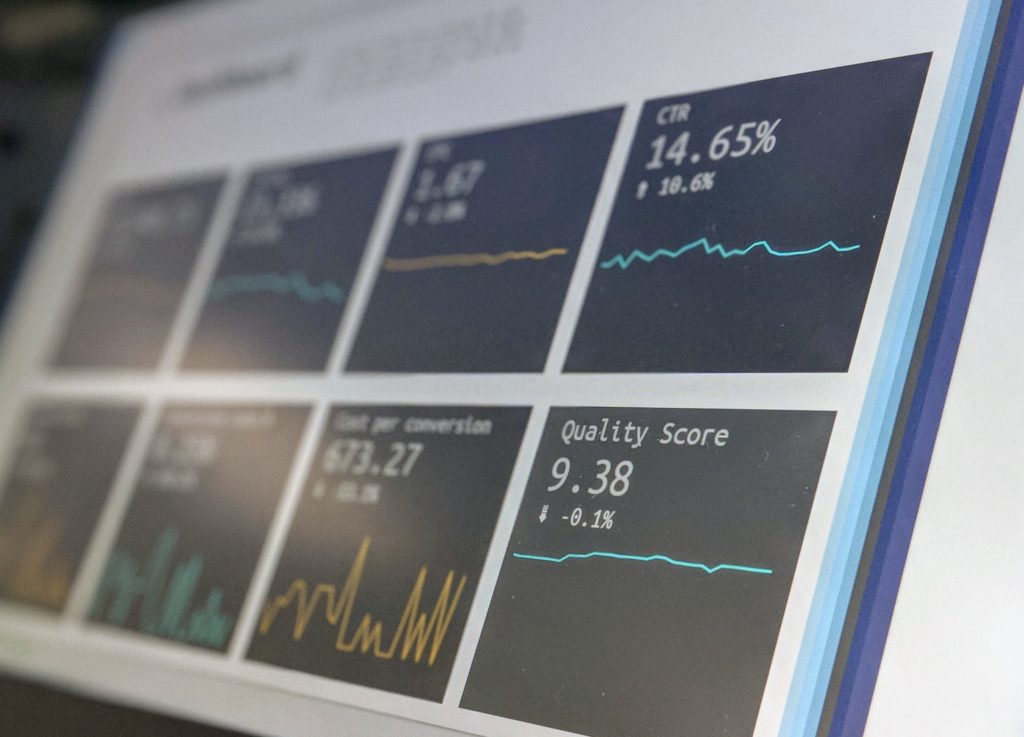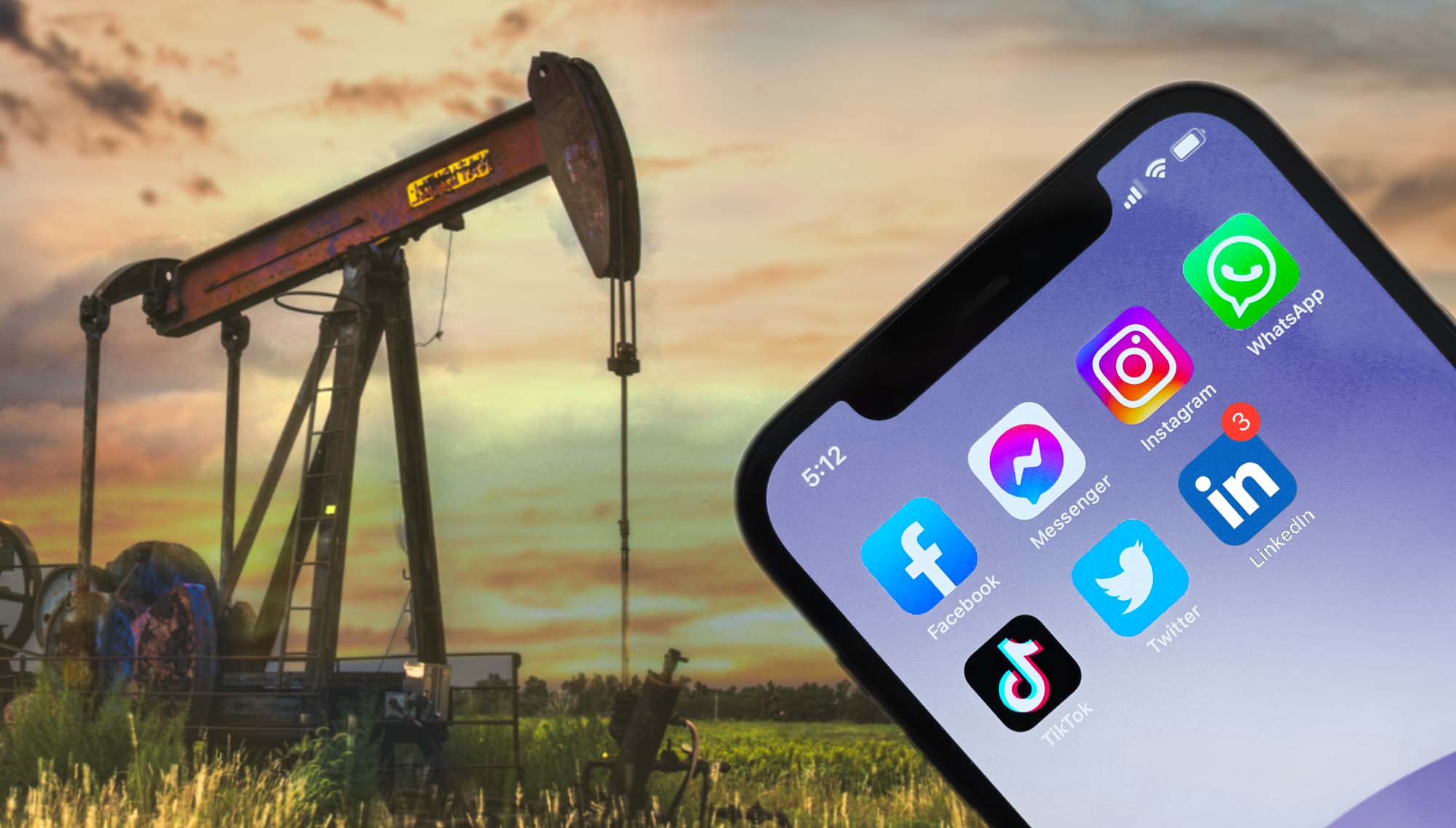Digital transformation in oil and gas is happening throughout the industry.
From operations and production all the way to sales and marketing, the oil and gas sector is looking at ways to utilize technology to increase efficiency and get better results.
When it comes to marketing and sales, digital transformation is often just thought of as going paperless — focusing more on digital documents, websites, and ads. While this is a part of the digital transformation in sales and marketing, it’s not the be all and end all. Certainly moving marketing and sales operations online from in-person plays a big role. However, it’s critical to consider the strategy behind it and focus digital marketing efforts on reaching specific goals.
- Digital transformation in oil and gas is happening throughout the industry.
- Use digital marketing in the oil and gas industry to reach your business goals
- Understand digital transformation in oil and gas websites
- Stay ahead of oil and gas marketing trends
- Apply digital transformation in oil and gas to connect sales with marketing
- Make your digital transformation in oil and gas marketing count
The handshake nature of current oil and gas marketing trends isn’t on its way out. In fact, oil and gas companies who effectively use digital marketing learn how to combine in-person marketing efforts with their digital strategies. It’s not about replacing the old with the new, but about learning how to incorporate emerging digital transformation trends into tried-and-true oil and gas industry marketing strategies.


Use digital marketing in the oil and gas industry to reach your business goals
It can be tempting to launch a new website, open a social media account, and begin spending money on Google Ads as soon as you learn your competitors are doing those things. While those tactics will come in handy, you first need to identify the key goals you are trying to achieve with your oil and gas digital marketing efforts.
We recommend breaking your possible goals into four key areas:
- Visibility: This goal is about getting more eyes on your brand. Increasing visibility is about brand awareness — ensuring your audience knows who you are and where you are.
(Check out our article on how to improve the visibility of your oil and gas website) - Engagement: This goal is about getting your audience to take part in your marketing efforts, such as clicking on a link, reading a blog, or signing up for your newsletter.
- Conversion: Most companies want this to be their first goal, because it’s about getting your prospects to sign on the dotted line and become customers. However, you can’t get conversions without first getting visibility and engagement.
- Retention: This goal is essential in many industries, especially oil and gas. Here, you want to turn your current customers into repeat customers.
When you first begin your digital transformation in marketing and sales, you’ll need to start with one goal, usually visibility. Master that, and then move on to the next. Trying to achieve all four goals at once may result in convoluted strategies and messaging that do not resonate with your audience.
Understand digital transformation in oil and gas websites
Regardless of which marketing goal you’re trying to achieve with your digital marketing strategy, your website is going to be a critical component of your digital transformation efforts. Working exclusively with oil and gas companies, we see many outdated websites that have been stagnant for over a decade.
Many companies in oil and gas feel their website isn’t an important part of their marketing strategy — digital or not. As a result, they don’t invest time and resources into ensuring their website is up to date and clearly communicates the value they offer. In fact, many oil and gas companies believe their prospects and customers don’t search online at all, assuming all marketing happens in person.
The truth is that digital marketing is becoming increasingly important in oil and gas, and websites need to be front and center in your marketing efforts. However, it’s not about just creating any oil and gas website and hoping prospects will find you. You have to develop a digital transformation strategy and utilize the best technology to achieve your objectives.
Prioritize oil and gas web design, copy, and user experience
When working on your oil and gas website, be sure to pay special attention to the design, copy, and user experience. It takes only 2.6 seconds for a website visitor to find an area of your website that will influence their first impression of your oil and gas company.
If your oil and gas website design is outdated and unattractive, or if your web copy is dense and difficult to skim, it’s very likely your website visitor will move on to a different site.


Learn who your oil and gas website visitors are and what they want
Your oil and gas copywriting, website design, and user experience should be focused on compelling your user to take action. And your marketing strategy should include tracking metrics to understand your website visitors’ behavior. Google Analytics is an effective tool that shows you how many people are visiting your website, which pages they are visiting, and how long they are spending on each page.
You can also learn how many people bounce off your website to determine whether your content and design is appealing to your audience. It also shows you what time and day most users visit, which country they are in, and whether they use a desktop or mobile to view your site. All of this information is useful for developing your oil and gas digital marketing campaigns.
You can get a lot of value out of the Sales Leads and Prospecting Software in HubSpot, which is free as part of the CRM. It helps you identify which companies your website visitors are from, and can even show you how many different pages each visitor is going to, as well as how many individuals from the same company are visiting your website. Once you have this data, you can seamlessly make the leap from digital marketing to in-person marketing, by having a sales rep contact the individual to answer their questions and help them take the next step in your sales process.
Stay ahead of oil and gas marketing trends
Digital transformation in oil and gas marketing strategies can help your business gain market share over competitive companies if you stay ahead of the current trends. It’s important to review what your competitors are doing so you can learn from their mistakes and successes, and push your marketing strategies forward by utilizing emerging trends.


Effective marketing strategies that can help your oil and gas company to attract more clients include:
- Search engine optimization: SEO helps your business to achieve visibility goals and bring more people to your website. It’s important to understand what your prospects are searching for online and then use those key phrases and keywords in your web copy.
- Pay per click ads: These ads also increase visibility to your website or to a specific landing page by bringing people there when they click on the ads. The ads are placed in search engines and publisher websites.
- Social media: Many oil and gas companies believe social media isn’t relevant to their business; however, the opposite is true. LinkedIn, Facebook, and Twitter are excellent places to build credibility for your brand, make new connections with potential customers, and drive more traffic to your website. (Learn more about social media marketing in the oil and gas industry)
- Blogs and podcasts: If you want to showcase your company’s expertise, a blog or podcast is an excellent medium. This is a form of owned media — over which you have full control — which you can use to educate, inform, and inspire your audience to take action.
- Authority articles: These high-value pieces of content are published by authoritative magazines, journals, and sites in the oil and gas industry. It’s a compelling way to show prospects how respected and credible your oil and gas company is within the industry.
Remember, you can combine your oil and gas digital marketing activities with your in-person marketing tactics. You do not have to let go of tried-tested-and-true strategies in favor of unchartered waters.
Apply digital transformation in oil and gas to connect sales with marketing
Here is a critical step that often gets forgotten when oil and gas companies consider digital transformation and dip their toes into digital marketing: bridging the gap between marketing and sales.
Consider these important questions as part of your digital transformation plan:
- How do your sales team know when they should reach out to the website visitors that are on your site?
- How do they know who those people are?
- What framework should your sales rep use to have conversations with your website visitors without seeming overbearing?
- How can your sales reps connect online visits to actual sales?
In order to close the loop between marketing and sales and ensure that your reps can actually close accounts, we recommend using a full-service growth suite such as HubSpot CRM. This innovative tool is not only free to get started with, but includes a marketing hub, sales hub, and customer service hub so all members of your marketing, sales, and customer service teams can remain connected while engaging with prospects and customers.


Within HubSpot CRM, you can build a detailed database of who your prospects and customers are and view their actions all in one place. You can also manage your deals within the CRM, as well as any email or ad campaigns. Plus, you can aggregate conversations with your website visitors from multiple platforms into one streamlined spot — so you never have to go searching through chat or email history to find account details again.
Make your digital transformation in oil and gas marketing count
Remember, digital transformation marketing strategies begin with a goal in mind. Figure out what you want to achieve, then utilize digital marketing tactics to help you achieve it.
Get in touch with us today to learn more about how your oil and gas company can use digital transformation to increase efficiency and get better results with your marketing and sales efforts.





